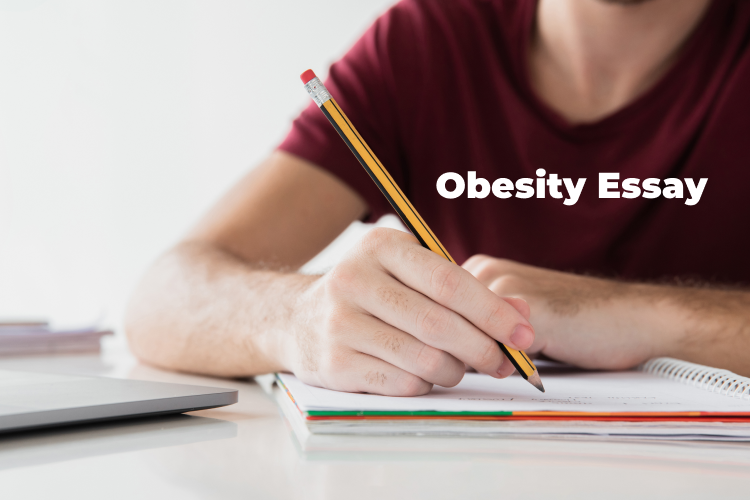Everything You Should Pay Attention to During the Assessment

Assessment of writing skills or teaching, can become part of the life of any student, regardless of specialization. In this context, all types of academic work are especially relevant, among which may be the following:
- statistical reports;
- essay on art;
- bibliography;
- abstracts and others.
Writing has long been an integral component of studying. A very sad fact is that most graduate students do not have the opportunity to learn teaching skills and assessment of writing. Moreover, there is an option for limited written studying regarding the specialist’s own scientific subjects.
In fact, written assessment is not only a component of the final work and getting the appropriate point, but also an illustration of the skills that the student has learned. In this article, we will talk about the main features of this phenomenon and all that you should pay attention to.
Choosing Suitable Structure
During the creating an assessment, first of all, you need to deal with the definition of its purpose and structuring, which entails students’ understanding of objectivity and, accordingly, learning lessons and taking into account all the comments. The most effective estimate contains the following structure components.
- A detailed description of the essence of the assignment, indicating all the requirements from which the student’s assessment will depend.
- Objectivity with regards to various resources and time costs.
- Passed material should be indirectly associated with the degree of study in the classroom. This statement means the need to create tests whose questions were raised during lessons. Procedural and practical aspects should also be highlighted.
- Share information about the upcoming test with students and have a discussion about its contents. You can also start renewing old tasks by linking them to the following list of questions that will appear on the exam.
- Respond to student requests regarding various questions. These points are very important because it is this one that gives students the opportunity to learn from their mistakes and highlight all the places in which they have insufficient knowledge. The best option would be to return grades in a short amount of time so that the assignment can remain fresh in memory.
- Separation of headings that will help students have an idea of future assignments. The rubric is a kind of tool with the help of which the granularity of the differences between the possession of a sufficient number and their absence is implemented. Creating a rubric is a time-consuming process. nevertheless, in the consequences, they contribute to a significant increase in consistency and better-informing students.
Essay As The Final Part Of The Assessment Test
Very often, after a series of test tasks, the student has to write an essay on a selected topic. Below we have provided a number of ideas that may appear in your test. In addition, we gave an example of a finished essay that is written in compliance with all requirements.
Topics for a Similar Task
- Nietzsche as a researcher of antiquity.
- The problem of gender equality and its reflection in various spheres of culture.
- The phenomenon of American exclusivity.
- Psychoanalysis as an important part of understanding primitive culture.
- The influence of drugs and violent computer games on the formation of a teenager.
- The essence of art in terms of aesthetics.
- Virtual Reality as an Essential Characteristic of Modern Cultures.
- The psychological aspects of hackers.
- The phenomena of space in history.
- The historical outline of the essence and formation of various economic doctrines.
Evaluate Our Completed Essay As an Example
Sacred attitudes to social memory in man have been preserved at all times, which is recorded in the museum as a special social phenomenon, which has a number of distinctive features:
The museum has a binding force in the preservation of socio-cultural heritage, controls the formation, use, and storage of exhibits applies sanctions that regulate these processes if necessary.
The activities of the museum are regular, self-renewable, and predictable. The types of behavior of the museum visitor and employee may be described.
The demands placed on visitors and staff of the museum are personalized. The behavior of a person in a museum is determined by the general rules laid down by the institution. The museum has a clear division of labor and a high level of professionalism. Differentiation of museum work is carried out in different directions: research, exposition, stock, restoration, educational, marketing, pedagogical, etc.
Museum organizes and coordinates the activities of the people in order to preserve the knowledge of the past, its transfer, without which this activity would become disparate, inconsistent, and unstable. This institution performs specific social functions. Their formation, updating, or change are determined by specific, historically predetermined needs. Thus, the function of protection of values is peculiar to any owner at all times, and the research function is formed in response to the need to systematize numerous materials received as a result of the expeditionary activity. Scientific and educational function satisfies an educational need, which emerged largely as a consequence of the democratization of society.
Thus, the museum is a kind of holistic, artificial, purposeful system with its morphology, functions, dynamics. The museum received the state-social status of the scientific-historical and cultural-educational institution, adapted to the influence of economic, political, social, spiritual, and ideological factors, became the object of state policy and management.
The latent function of the museum can be considered a function of cultural orientation and identification, which promotes the unification and self-knowledge of societies, groups, and personalities in the process of comprehending their cultural heritage. Equally important is the axiological function that guides the individual and society in the world of values, which shapes and expands the concept of ideals, norms, canons. The ideological function of the museum associated with it has been constantly recognized and used by the authorities, although today, it is preferred not to speak about it.
The aesthetic, ethical, and cognitive functions of the museum are inextricably linked, contributing to the formation of the picture of the human world.
World practice testifies to changes in the organization of the museum space: exhibitions, recreational areas, leisure centers, museum infrastructure. They are dictated by the need to develop new forms of work with the visitor, to organize the process of his visit to the museum.
The museum as an educational institution and a cultural and entertaining organization becomes a complex organism with an extensive network of modern services aimed at ensuring the satisfaction of the set of intellectual and cultural and household needs of society.
Check Out Our Little Test
You can also familiarize yourself with the test and the answers that we have compiled.
1. Give examples of archaeological sites.
Settlements, mounds, remains of ancient settlements, fortifications, production, canals, roads, ancient burial places, stone sculptures, rock paintings, ancient objects, sites of the historical, cultural layer of settlements.
2. Describe movable and immovable sights.
*Immovable monuments are authentic sources of socially significant historical and cultural information, represented by topographically determined fragments of the actual surrounding space, reflecting the process of spatial material and spiritual development of man by the natural environment.
* Moving monuments are authentic sources of socially significant historical and cultural information, represented by mobile objects that reflect the process of material and spiritual development of the people of the world.
3. Identify the main areas of socio-cultural use of monuments:
• source scientifically;
• semantic-communicative;
• psycho-active;
• structural and functional;
• educational;
• genetically-chronological;
• ideological;
• recreational;
• structural and functional.
4. Give a few approaches to identifying the subject of disciplines related to the study of monuments, characterize each of them.
*Institutional (the subject is the institution that accumulates the monuments).
*Subject matter (subject matter is one or another type of monuments).
*Cultural, when the focus of researchers in the specific attitude of man to reality, which is manifested in the selection, preservation, and use of objects as sources of historical memory.
*Sectoral – as a subject of discipline is considered the sphere of social activity related to the preservation and socio-cultural use of historical and cultural values.
The first three approaches reflect one aspect of the discipline, and the fourth approaches summarize them.
5. Set match.
1. Complexes (ensembles) of monuments. D.
2. Historical and cultural areas. B.
3. Historical and cultural landscape. C.
4. Historical and cultural settlements. A.
A. Territories represented by several historical and cultural habitats and landscapes that form the settlement.
B. Topographically defined sets of complexes (ensembles) of monuments, which underlie the traditional character of the historical-cultural natural-anthropogenic environment (inherited from previous generations).
C. Topographically defined traditional natural “background” that “accompanies” the process of spatial development by the world’s people.
D. Topographically defined sets of stationary objects that form a whole from utilitarian, artistic, industrial, defense, household, and other points of view.
Recommendations
- You should not get too hung up on superficial mistakes. Focus on several of the most important shortcomings, especially those that the student has encountered before.
- Provide alternatives to doing the work incorrectly. Indication of student errors will be useless provided there are no aspects of proper execution
- Use diverse tasks to dilute the process of their implementation.
- Don’t forget the praise. This element is a very good incentive for excellent student work.
- You should also opt out of using vague work reviews because they are also worthless. Remember the clarity and specifics that are your best friends during the assessment.
Final Tip
Don’t be afraid to resort to new methods of work and try to maintain friendly relations with your students. This will greatly improve your work by showing them that you are really interested in educating and are a trustee to whom they can turn for help.
Get more info from our insights!
At Paytowritepaper, our main objective is to provide a high-quality assistance for academic assignment of any complexity. Except of writing help, we also share guides to different tasks and other information about student's lifestyles. Check the recommendations and reach our writers if you need any kind of writing assistance!
Get started




